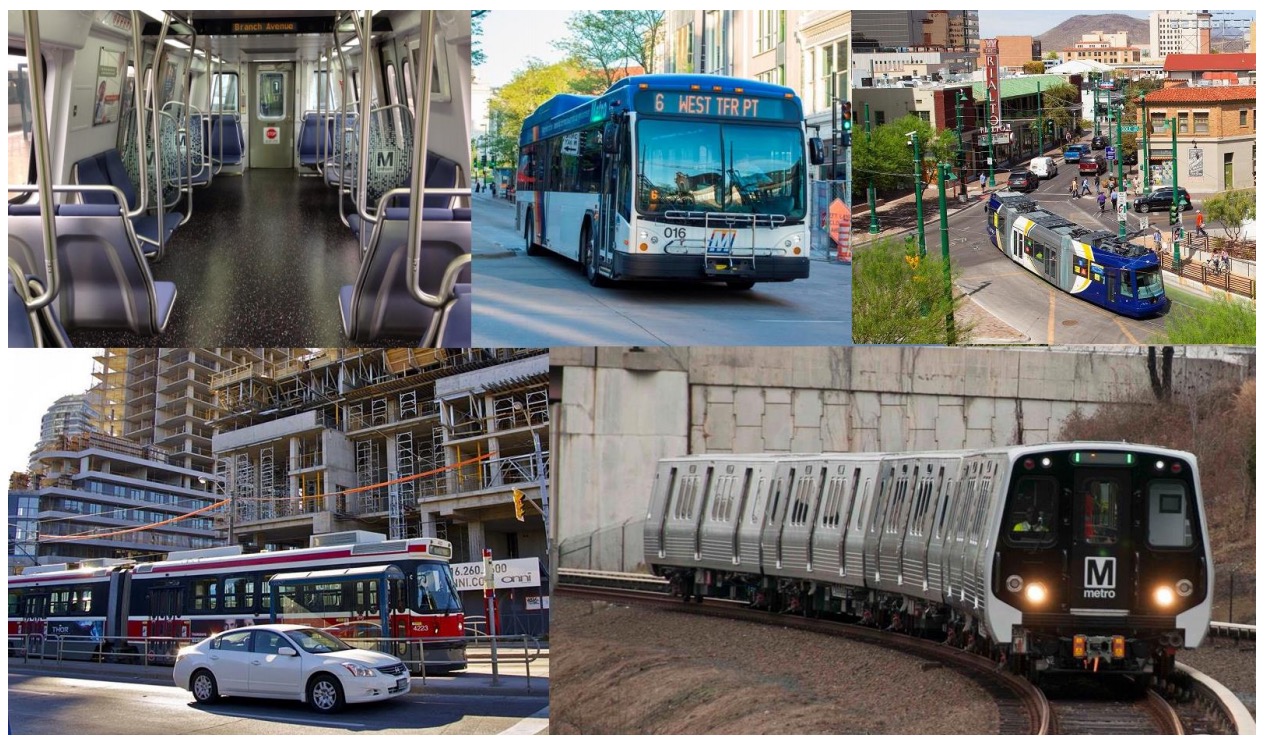UNITED STATES DEPARTMENT OF TRANSPORTATION
FEDERAL TRANSIT ADMINISTRATION (FTA)
Executive Summary
 MAP-21 (Pub. L. 112-141 (2012)) amended Federal transit law by authorizing a new Public Transportation Safety Program at 49 U.S.C. § 5329. Pursuant to Section 5329(b), the Public Transportation Safety Program must include a National Public Transportation Safety Plan to improve the safety of all public transportation systems that receive Federal transit funds.
MAP-21 (Pub. L. 112-141 (2012)) amended Federal transit law by authorizing a new Public Transportation Safety Program at 49 U.S.C. § 5329. Pursuant to Section 5329(b), the Public Transportation Safety Program must include a National Public Transportation Safety Plan to improve the safety of all public transportation systems that receive Federal transit funds.
Purpose of the National Public Transportation Safety Plan
The purpose of the National Public Transportation Safety Plan or National Safety Plan, is to guide the national effort in managing the safety risks and safety hazards within our Nation’s public transportation systems. The National Safety Plan must include, at minimum, the following elements:
1. Safety performance criteria for all modes of public transportation (Chapter III),
2. The definition of the term “state of good repair” (Chapter III),
3. Minimum safety performance standards for public transportation vehicles used in revenue operations that are not otherwise regulated by any other Federal agency, and that take into account relevant recommendations of the NTSB and other industry best practices and standards (Chapter IV),
4. Minimum safety standards to ensure the safe operation of public transportation systems that are not related to vehicle performance standards, (Chapter IV), and
5. A safety certification training program (See description in Executive Summary on Page 8).
FTA is committed to developing, implementing, and consistently improving strategies and processes to ensure that transit achieves the highest practicable level of safety. FTA has adopted the principles and methods of SMS as the basis for enhancing the safety of public transportation in the United States. FTA will follow the principles and methods of SMS in its development of future iterations of the National Safety Plan, rules, regulations, policies, guidance, best practices and technical assistance.
SMS helps organizations improve upon their safety performance by supporting the institutionalization of beliefs, practices, and procedures for identifying, mitigating, and monitoring safety risks. FTA will work with the industry to phase-in the implementation of SMS. Over the next several years, FTA will continue to utilize pilot projects to build the transit industry’s understanding of SMS and help FTA to both identify areas where further guidance and technical assistance are needed, and build its own core safety capabilities and processes.
The direction and guidance set forth in this Plan are intended to guide FTA’s partners within the transit industry towards improving an already excellent safety record. FTA believes that this Plan represents a great opportunity to make a difference in transit safety. FTA expects to see measurable improvements in safety performance across the transit industry as the Safety Program matures.
The National Safety Plan is just one component of the Public Transportation Safety Program. In addition to this Plan, FTA is undertaking the following rulemakings to improve transit safety:
- Public Transportation Safety Program Rule – On August 11, 2016, FTA issued a final rule for the Public Transportation Safety Program3 that establishes substantive and procedural rules for FTA’s administration of the Safety Program. Importantly, the rule formally establishes SMS as the foundation for FTA’s development and implementation for the Safety Program. In addition, the rule institutes due process mechanisms related to FTA’s exercise of its safety oversight and enforcement authorities.
- State Safety Oversight Rule – On March 16, 2016, FTA issued a final rule for State Safety Oversight to strengthen States’ authority to investigate rail transit accidents and oversee the safety of rail transit systems.
- Public Transportation Safety Certification Training Program Rule – The Safety Certification Training Program establishes a curriculum and minimum competencies for Federal, SSOA personnel and contractors who conduct safety audits and examinations of rail fixed guideway public transportation systems, and for designated transit agency personnel and contractors who are directly responsible for safety oversight of a recipient’s rail fixed guideway public transportation systems. The final rule for the Safety Certification Training Program replaces an interim program which became effective on May 28, 2015. For more information on safety training resources, visit https://safety.fta.dot.gov/cms/welcome.
- Public Transportation Agency Safety Plan Rule – This rule would establish requirements for recipients of Federal transit funds to develop public transportation agency safety plans. The plans would include the recipient’s strategies for minimizing the exposure of the public, personnel, and property to unsafe conditions and include safety performance targets.
- Preventing Transit Worker Assaults Rule – The FAST Act requires FTA to issue an NPRM to establish “rail and bus safety standards, practices, or protocols” for “protecting rail and bus operators from the risk of assault.” In the proposed rulemaking, the Secretary shall consider different safety needs of drivers of different modes, differences in operating environments, the use of technology to mitigate driver assault risks, existing experience, from both agencies and operators that already are using or testing driver assault mitigation infrastructure; and the impact of the rule on future rolling stock procurements and vehicles currently in revenue service.
Each component of the National Safety Program will work together to ensure that appropriate and adequate risk surveillance, monitoring, and intervention methods and practices are utilized to minimize risks through the strategic application of available resources.
Download full version (PDF): National Public Transportation Safety Plan
About the Federal Transit Administration
cms.fta.dot.gov
The Federal Transit Administration (FTA) provides financial and technical assistance to local public transit systems, including buses, subways, light rail, commuter rail, trolleys and ferries. FTA also oversees safety measures and helps develop next-generation technology research.
Tags: Federal Transit Administration, FTA, United States Department of Transportation






 RSS Feed
RSS Feed